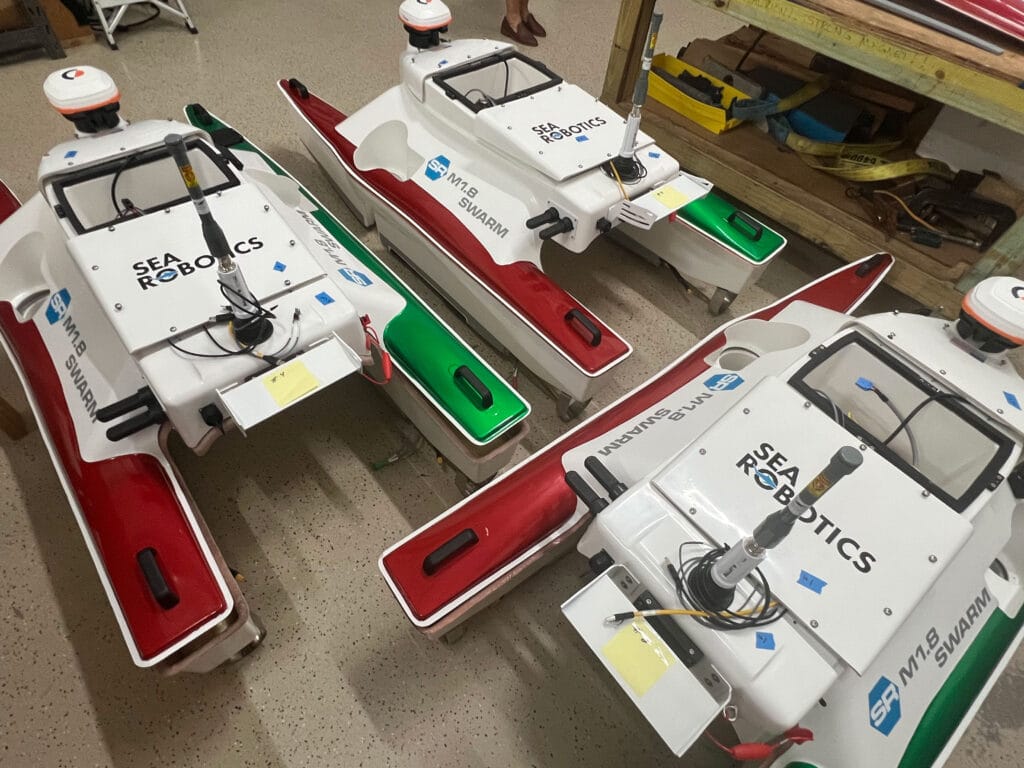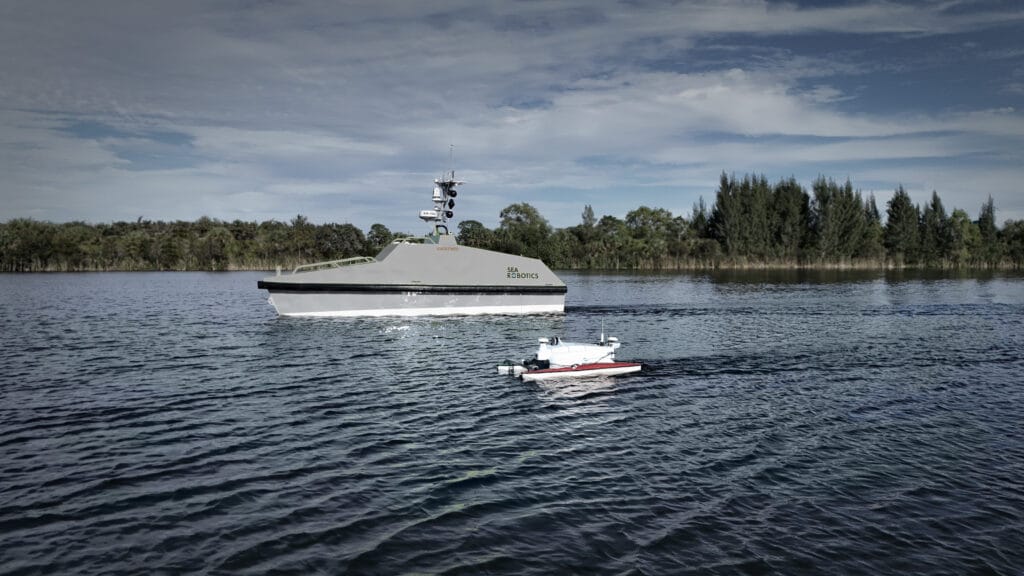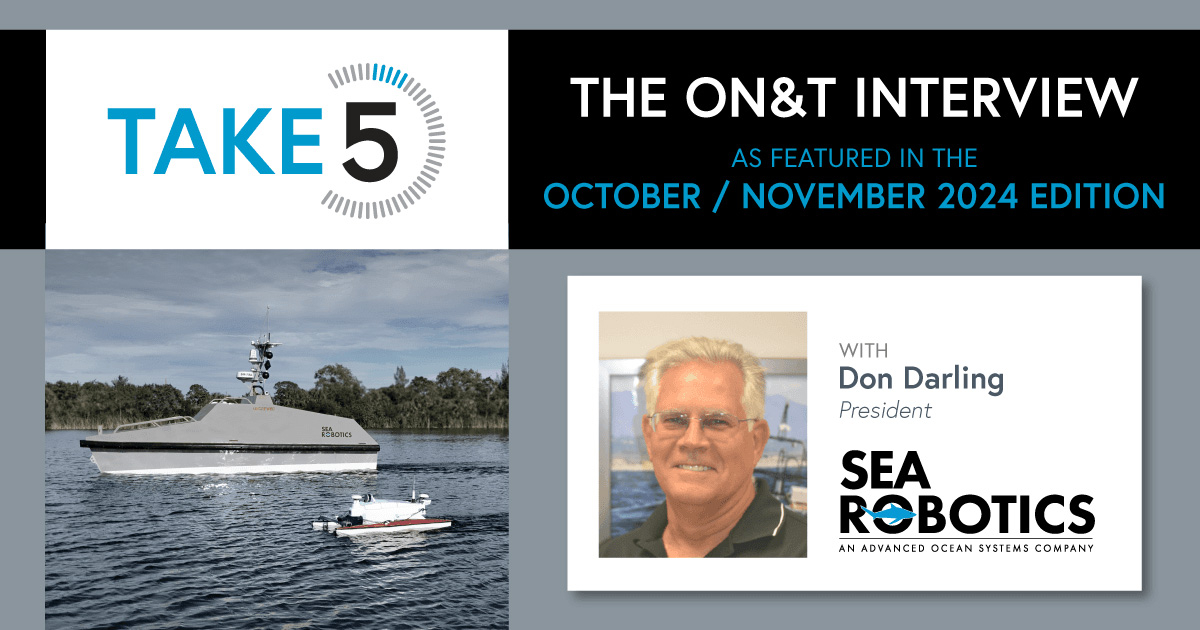Few names are as synonymous with Uncrewed Vehicles & Marine Robotics than SeaRobotics. The Florida-based outfit passed a major milestone in 2024, one which few can lay claim to: a quarter of a century of designing and manufacturing ASVs. We sat down with SeaRobotics President Don Darling to get his take on the burgeoning ASV industry and what the future holds.
1. Tell us a little about SeaRobotics’ story to date…
SeaRobotics really started in 1999, so we have been at this for a while now. You might even call us ASV pioneers. While we have designed and manufactured almost 70 different autonomous and semi- autonomous platforms over the last 25 years, it wasn’t until now that we have seen scalable interest in ASV technology from the private sector. In the past, most ASV technology was developed with a particular project in mind and often commissioned by defense contractors. But the variables— economic, geopolitical, and even cultural— have shifted, and today, there is an undeniable acceptance that deploying uncrewed vehicles on, below, and above the waterline is a means to safely and efficiently carry out at-sea operations. As a result, the ASV industry is starting to organize efforts to target specific categories of customer base.
For SeaRobotics, that means partnering with customers involved within two marine-based activities: 1. marine survey projects (seafloor mapping, marine environmental monitoring, subsea inspection, etc.); and 2. defense and security ops (coastal surveillance, tactical ops, search and rescue, etc.).

SeaRobotics’ Swarm Unit of compact ASVs is suited to a range of survey and surveillance operations. (Image credit: SeaRobotics)
2. What types of ASV does SeaRobotics currently offer?
SeaRobotics has an ASV line-up organized by vehicle class, which includes our Surveyor Class (compact, man-portable ASVs best suited to coastal and inland waters), Utility Class (mid-size multipurpose models that support weightier, interchangeable payloads), and Endurance Class (a series of larger hybrid diesel-electric vessels designed for longer autonomous deployments in higher Sea States).
In recent years, we’ve seen a clear spike in demand for our most compact ASV, the SR-Surveyor M1.8. Launched in 2019, this shallow draft, plug-and-play ASV punches above its weight. Supported by an Edge- Tech 2205 and Velodyne LiDAR, and at only 1.8 meters in length, the fully integrated ASV delivers synchronized data capture of two frequencies of side scan, motion tolerant side scan, wide swath bathymetry, backscatter, LiDAR point cloud data, and discharge data. We are fast approaching our 40th unit sold.
We are also seeing growing interest in our Endurance Class ASVs, the latest of which, the SR-Endurance 8.0, is built for longer missions—up to 11 days at a survey speed of 5 knots. The 8-meter, self-righting hybrid diesel-electric propulsion ASV is equipped with collision avoidance technology, GPS navigation, and customizable levels of autonomy—with an operator in the loop and out. It also features an aft deck large enough to carry and deploy ancillary assets—smaller USVs, ROVs, AUVs, and other towed bodies—so it brings a new dimension of utility to the platform.
3. How do you go about designing an ASV from scratch?
An ASV is ultimately a system of systems engineered to perform a set of relatively routine tasks under varying degrees of autonomy. The incentives are clear: safer, cleaner, cost-effective, and highly efficient marine operations.
In general, ASV design considerations are heavily influenced by the rate of progress driving the various supply chains that represent the hardware (construction materials, power systems, propulsion, cameras, sensors) and the software (information and communication technologies designed to enhance the remote control and telemetry of remotely operable assets). The almost breakneck speed of technological momentum across all industries—not to mention the actual sensor suites that ASVs are designed to house and support—has significantly enhanced the capacity of what’s possible with uncrewed platforms.
Our first job, as ASV specialists, is to work with the customer to realistically identify the target tasks that clients want the ASV to perform, and under what conditions. From there, we can recommend various customization options for one of our established models. We can also upgrade a client’s existing ASV or even convert a legacy vessel to incorporate a new autonomous command and control package.
We always want to maximize the utility of any platform, so some of our ASVs are designed to accommodate interchangeable sensors and payload options. But we also want the ASV to perform in a range of different environments under unpredictable conditions, so balancing the suitable payload capacity with hull form is a decisive step.
4. So, what does the future of the ASV market look like?
Well, that depends on the market report you read, but they all point to a multibillion-dollar industry by 2030 with double-digit CAGR. Regardless, we can be sure that the ASV market will continue to fragment and, therefore, ASV form and factor will diversify further. The defense sector will unquestionably continue to be a considerable influence as Navies around the world seek funding for an increasingly hybrid approach to fleet management, incorporating ASVs of all sizes and functions. Last year, we saw Ukrainian forces successfully deploy ASVs as naval attack weapons, so predicting what’s next is a perilous task.

SR-Endurance 8.0 working alongside a SR-Surveyor M1.8 ASV. (Image credit: SeaRobotics)
But the private sector is now invested in ASV technology, with the offshore energy and marine survey industries leading the charge; and so I see a growing role for uncrewed vehicles in the planning, construction, and monitoring of offshore infrastructure and the waters surrounding such installations.
5. Is there one aspect of ASV technology that SeaRobotics is focused on right now?
Realizing the full potential of ASV technology will depend on the progress of a few technical aspects, such as the advancement of obstacle detection/avoidance technology and the integration of intelligent handling systems aboard the ASV itself to enable the autonomous/ remote launch and retrieval of payloads. In recent years, we have engineered and trialed a series of deployment systems for a range of ASV models, ultimately allowing an uncrewed asset to manage and monitor ancillary assets and sensors in the field.
ASV force multiplication is another area we are working on. We have supported several highly specific initiatives in this area of late through the development of a unique ASV swarm unit, with the SR-Surveyor M1.8 as its chief protagonist. The ability to simultaneously operate multiple units remotely (we have successfully run exercises with ASVs and operators in different hemispheres) brings an entirely new dynamic to the concept of over-the-horizon operations. Having separate units complete survey lines at the same time in multiple locations under one central, shore-based control is a snapshot of the future, for sure.
For more Take 5 interviews, visit: oceannews.com/frontline
This story was originally featured in ON&T Magazine’s October/November 2024 issue. Click here to read more.



